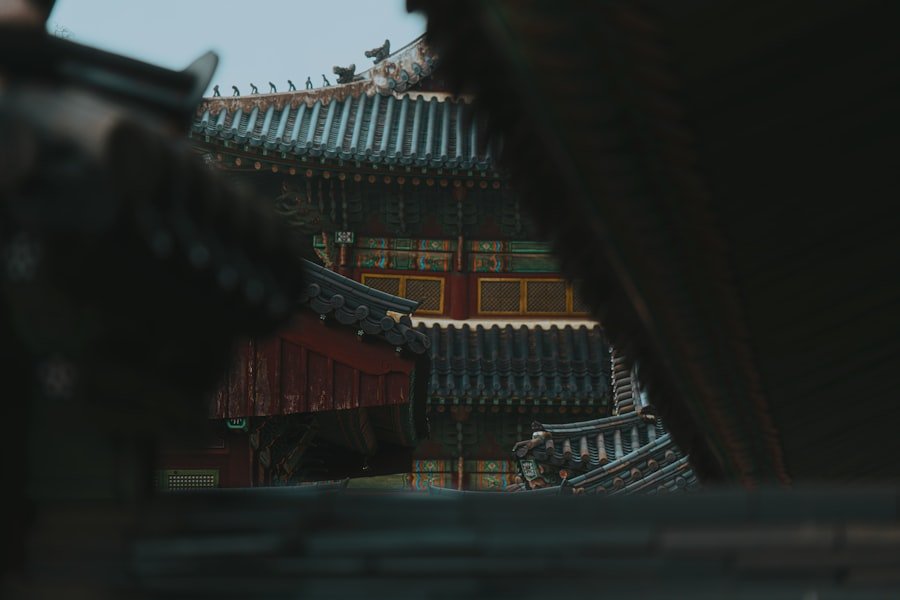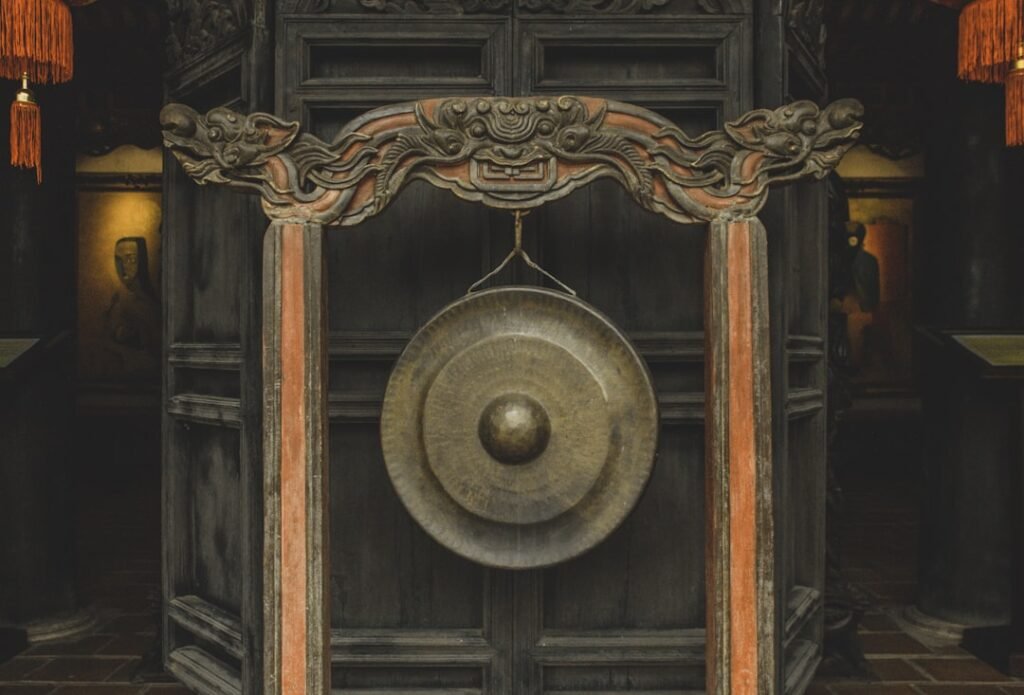The concept of Jingluo, which translates to “meridians and collaterals,” is deeply rooted in the ancient traditions of Chinese medicine. Its origins can be traced back thousands of years, with references found in classical texts such as the Huangdi Neijing, or the Yellow Emperor’s Inner Canon. This foundational work, believed to have been compiled during the Han Dynasty, outlines the principles of Chinese medicine, including the intricate network of meridians that are thought to govern the flow of Qi, or vital energy, throughout the body.
The understanding of Jingluo has evolved over centuries, influenced by philosophical schools of thought, including Daoism and Confucianism, which emphasise harmony and balance within the body and with the environment. The early practitioners of Chinese medicine observed that certain pathways in the body corresponded to specific physiological functions and emotional states. This led to the development of a comprehensive system that not only mapped these pathways but also linked them to various organs and bodily functions.
The Jingluo system is not merely a physical representation; it embodies a holistic view of health, where emotional, spiritual, and physical aspects are interconnected. As such, Jingluo serves as a bridge between the tangible and intangible elements of health, illustrating how ancient wisdom continues to inform modern practices. Spaces are filling up fast! Register for Chinese classes at the LC Chinese School in Oslo today.
Table of Contents
ToggleSummary
- Jingluo in Chinese medicine is believed to have originated from ancient observations of the flow of energy in the body.
- Meridians are thought to be channels through which Qi, or vital energy, flows, connecting the body’s internal organs and systems.
- The 12 primary meridians correspond to specific organs and have distinct functions in regulating the body’s energy flow.
- The eight extraordinary meridians are considered to be reservoirs of Qi and play a role in maintaining overall balance and harmony in the body.
- Meridians are central to acupuncture and acupressure, which aim to stimulate or manipulate the flow of Qi to restore health and well-being.
Understanding the Concept of Meridians in Chinese Medicine
Meridians are often described as channels through which Qi flows, connecting different parts of the body and facilitating communication between organs. In traditional Chinese medicine (TCM), these pathways are not merely anatomical structures; they represent a dynamic system that reflects the body’s overall state of health. Each meridian is associated with specific organs and functions, creating a complex web that underscores the interdependence of bodily systems.
The concept of meridians is integral to TCM’s holistic approach, which views health as a balance of physical, emotional, and environmental factors. The twelve primary meridians are classified into Yin and Yang categories, with Yin meridians generally associated with solid organs and Yang meridians linked to hollow organs. This classification is essential for understanding how imbalances can manifest in various health issues.
For instance, an excess of Yang energy might lead to conditions characterised by heat and inflammation, while a deficiency in Yin could result in symptoms such as fatigue and dryness. By recognising these patterns, practitioners can tailor their treatments to restore balance and promote healing.
The Pathways and Functions of the 12 Primary Meridians

The twelve primary meridians form the backbone of TCM’s understanding of bodily functions. Each meridian corresponds to a specific organ system and plays a crucial role in maintaining health. For example, the Lung Meridian is responsible for respiration and the distribution of Qi throughout the body, while the Liver Meridian governs detoxification and emotional regulation.
These pathways not only facilitate the flow of Qi but also serve as conduits for blood circulation and lymphatic drainage, highlighting their multifaceted roles in overall health. Each meridian follows a distinct pathway through the body, often traversing multiple regions and connecting with various tissues and organs. This interconnectedness means that an issue in one area can affect distant parts of the body.
For instance, a blockage in the Spleen Meridian may lead to digestive issues that manifest as fatigue or weakness elsewhere. Understanding these pathways allows practitioners to diagnose conditions more accurately and develop targeted treatment plans that address both localised symptoms and systemic imbalances.
Exploring the Eight Extraordinary Meridians in Chinese Medicine
In addition to the twelve primary meridians, TCM recognises eight extraordinary meridians that serve unique functions within the body’s energy system. These meridians are considered reservoirs of Qi and play a vital role in regulating the flow of energy throughout the primary meridians. Unlike their primary counterparts, which are more closely associated with specific organs, the extraordinary meridians are thought to influence broader aspects of health and well-being.
The eight extraordinary meridians include the Du Mai (Governing Vessel), Ren Mai (Conception Vessel), Chong Mai (Penetrating Vessel), and others that connect various energy systems within the body. For example, the Du Mai runs along the spine and is associated with Yang energy, while the Ren Mai traverses the front of the body and is linked to Yin energy. These meridians are often targeted in acupuncture treatments to address deeper imbalances or chronic conditions that may not respond to standard therapies.
By tapping into these extraordinary pathways, practitioners can enhance their treatment efficacy and promote holistic healing.
The Role of Meridians in Acupuncture and Acupressure
Acupuncture and acupressure are two prominent modalities within TCM that utilise the concept of meridians to promote healing. Both practices involve stimulating specific points along these pathways to restore balance and enhance the flow of Qi. Acupuncture employs fine needles inserted at strategic points to elicit a response from the body’s energy system, while acupressure uses manual pressure to achieve similar effects without needles.
The selection of acupuncture points is based on a thorough understanding of meridian pathways and their associated functions. For instance, stimulating points along the Stomach Meridian can alleviate digestive issues, while points on the Heart Meridian may help regulate emotions. This targeted approach allows practitioners to address both physical symptoms and underlying emotional or psychological factors contributing to a patient’s condition.
As such, acupuncture and acupressure are not merely treatments for pain or discomfort; they represent a comprehensive strategy for restoring harmony within the body.
Tracing the Meridians: Techniques and Tools Used in Chinese Medicine

Tracing meridians is an essential skill for practitioners of TCM, enabling them to assess energy flow and identify blockages or imbalances within a patient’s body. Various techniques are employed to trace these pathways, including palpation, observation, and diagnostic tools such as tongue diagnosis and pulse diagnosis. Each method provides valuable insights into a patient’s health status and guides treatment decisions.
Palpation involves physically examining specific areas along the meridian pathways to detect tenderness or abnormalities that may indicate blockages or stagnation of Qi. Observational techniques may include assessing a patient’s complexion or posture, which can reveal underlying imbalances. Tongue diagnosis involves examining the colour, shape, and coating of the tongue for clues about organ health, while pulse diagnosis assesses the quality and rhythm of pulses at various points on the wrist.
Together, these techniques form a comprehensive diagnostic framework that informs treatment strategies tailored to individual needs.
The Relationship Between Meridians and Organ Systems in Chinese Medicine
In TCM, each meridian is intricately linked to specific organ systems, creating a complex interplay between physical structures and energetic pathways. This relationship underscores the holistic nature of Chinese medicine, where imbalances in one area can have far-reaching effects on overall health. For instance, disruptions in the Kidney Meridian may lead to issues with reproductive health or urinary function, while imbalances in the Heart Meridian can manifest as emotional disturbances or cardiovascular problems.
Understanding this relationship allows practitioners to develop targeted treatment plans that address both localised symptoms and systemic imbalances. By focusing on specific meridians associated with particular organ systems, practitioners can restore harmony within the body and promote optimal functioning across all systems. This interconnected approach highlights TCM’s emphasis on treating the root cause of health issues rather than merely alleviating symptoms.
The Role of Meridians in Maintaining Health and Preventing Illness
Meridians play a crucial role in maintaining health by facilitating the smooth flow of Qi throughout the body. When Qi flows freely along these pathways, it supports optimal organ function, enhances immunity, and promotes overall well-being. Conversely, blockages or stagnation within the meridian system can lead to various health issues ranging from minor ailments to chronic conditions.
Preventive care is a cornerstone of TCM philosophy, emphasising the importance of maintaining balance within the body before illness arises. Regular acupuncture sessions or acupressure treatments can help identify potential imbalances early on, allowing practitioners to intervene before symptoms develop. By nurturing the flow of Qi through meridian work, individuals can enhance their resilience against illness and promote long-term health.
The Importance of Jingluo in Traditional Chinese Medicine Diagnosis
Jingluo serves as a fundamental framework for diagnosis within TCM, guiding practitioners in their assessment of a patient’s health status. By examining the flow of Qi along specific meridians, practitioners can identify areas of stagnation or deficiency that may contribute to illness. This diagnostic approach is holistic in nature, considering not only physical symptoms but also emotional and environmental factors that may influence health.
The ability to interpret Jingluo patterns allows practitioners to develop personalised treatment plans tailored to each individual’s unique constitution and health concerns. For instance, if a patient presents with digestive issues linked to an imbalance in the Spleen Meridian, treatment may focus on restoring Qi flow through acupuncture points associated with that pathway while also addressing any emotional stressors contributing to the condition.
Modern Scientific Research on Meridians and Chinese Medical Language
In recent years, there has been a growing interest in exploring the scientific basis for concepts such as meridians within Western medicine. While traditional views may differ from contemporary scientific understanding, research has begun to uncover potential physiological correlates for meridian pathways. Studies using imaging techniques have shown that acupuncture points may correspond with areas rich in nerve endings or blood vessels, suggesting a biological basis for their therapeutic effects.
Moreover, modern scientific inquiry has prompted discussions about how traditional Chinese medical language can be integrated into contemporary healthcare practices. By bridging these two worlds—traditional wisdom and modern science—practitioners can enhance their understanding of health while providing patients with comprehensive care that respects both cultural traditions.
Incorporating Meridian Tracing into Holistic Health Practices
Incorporating meridian tracing into holistic health practices offers individuals a powerful tool for self-discovery and wellness enhancement. By learning about their own meridian pathways through courses or workshops at institutions like LC Chinese School in Oslo, individuals can gain insights into their unique energy patterns and how they relate to overall health. Such knowledge empowers individuals to take an active role in their well-being by recognising signs of imbalance early on.
At LC Chinese School in Oslo, students have access to comprehensive courses that delve into traditional Chinese medicine principles, including an emphasis on Jingluo and meridian tracing techniques. These courses provide practical skills alongside theoretical knowledge, enabling participants to apply what they learn in their daily lives or professional practices. Whether one seeks personal growth or aims to integrate TCM principles into their healthcare practice, LC Chinese School offers an enriching environment for exploring these ancient yet relevant concepts.
In conclusion, understanding Jingluo and its associated meridian systems is essential for anyone interested in traditional Chinese medicine’s holistic approach to health. By exploring these concepts through courses at LC Chinese School in Oslo, individuals can deepen their knowledge while gaining practical skills that enhance their well-being or professional practice. The integration of ancient wisdom with modern insights creates a rich tapestry for understanding health that resonates across cultures and generations.







